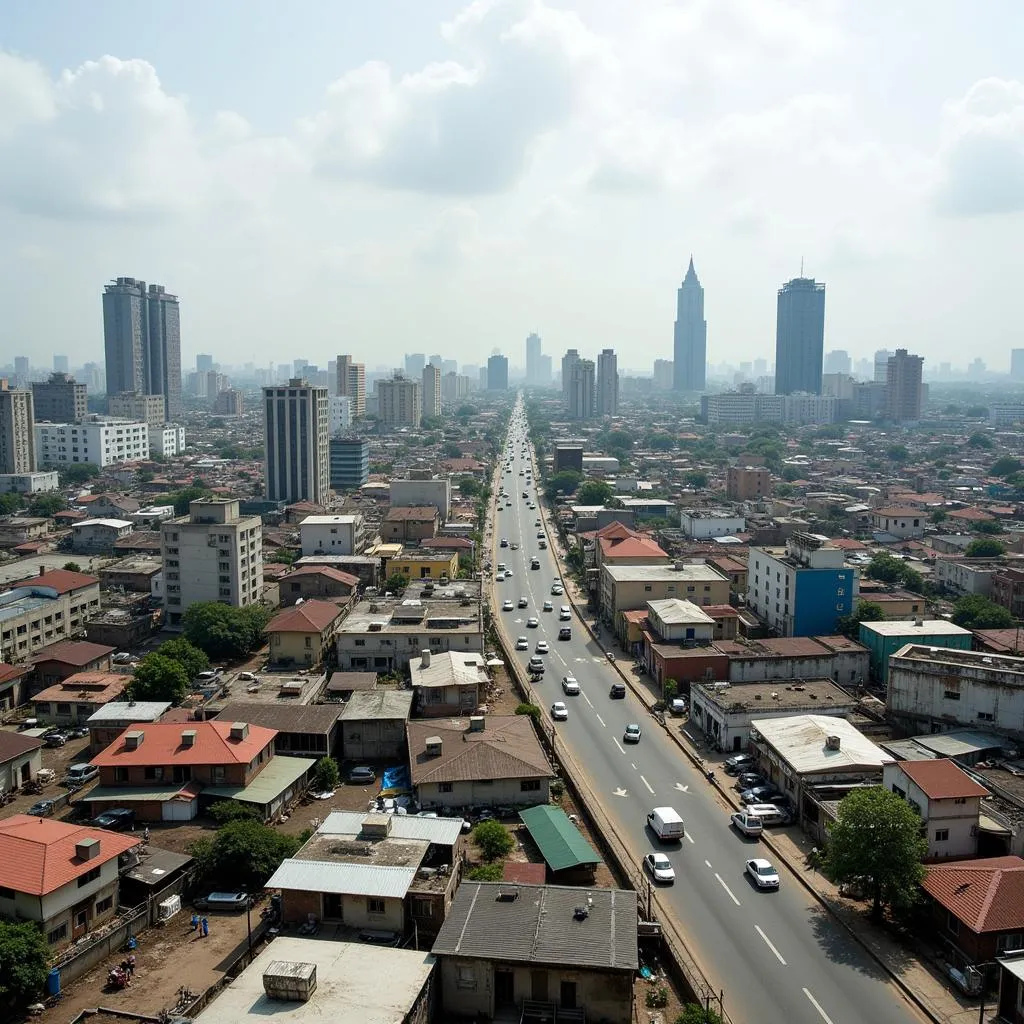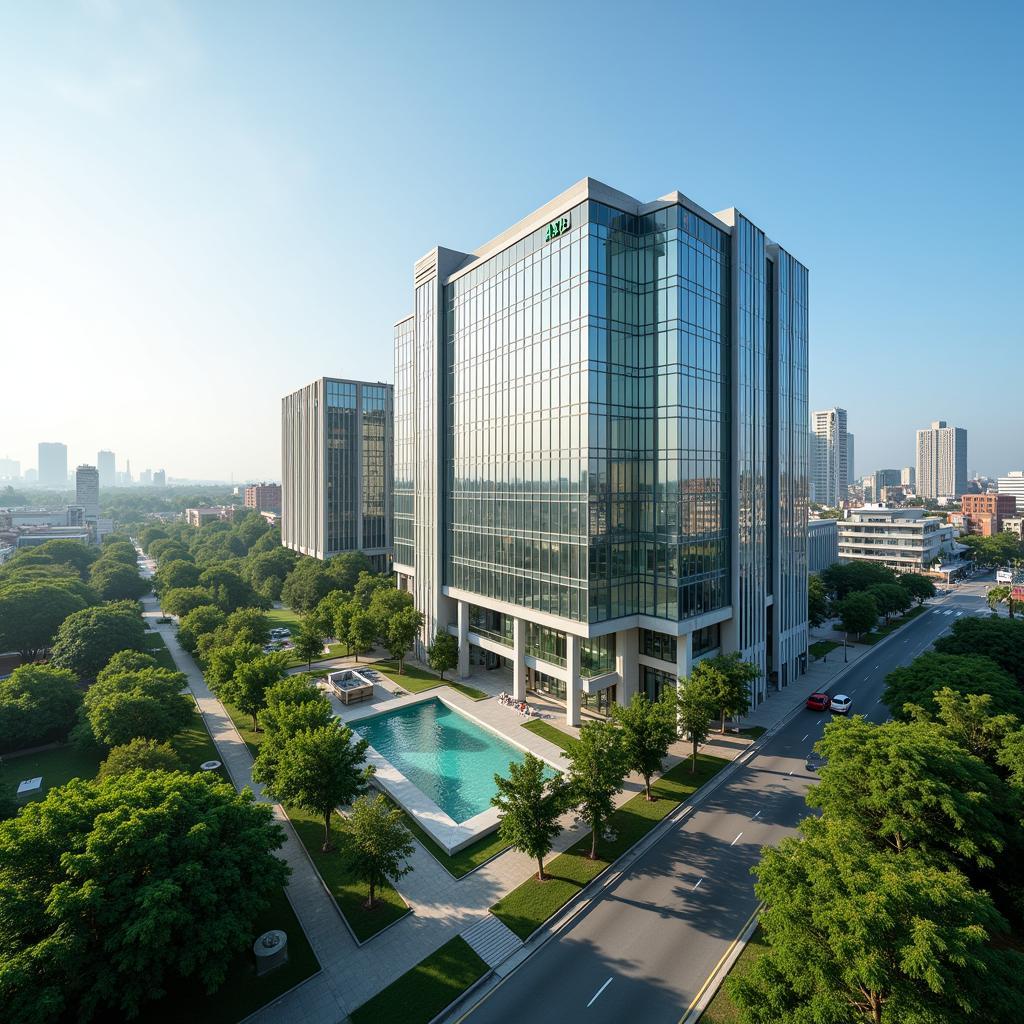The African City Model: A Look at the Unique Urban Landscapes of Africa
Africa is a continent of incredible diversity, and its cities are no exception. From bustling metropolises to vibrant coastal towns, Africa’s urban landscapes are constantly evolving and offer a glimpse into the unique challenges and opportunities facing the continent. This article explores the “African City Model,” examining its key characteristics, drivers, and implications for sustainable urban development.
The African City Model: A Definition
The “African City Model” refers to the distinctive patterns of urban growth and development observed in many African cities. This model is characterized by rapid population growth, informal settlements, a mix of traditional and modern architecture, and often, a struggle for resources. It’s not a single, uniform template but rather a set of common trends observed across diverse contexts.
Key Characteristics of the African City Model
1. Rapid Population Growth
Africa is the world’s fastest-growing continent, with a significant portion of its population migrating to urban areas in search of economic opportunities. This rapid urbanization puts immense pressure on existing infrastructure and resources, leading to challenges in housing, transportation, and service provision.
2. Informal Settlements
A defining feature of many African cities is the prevalence of informal settlements, often referred to as “slums” or “shantytowns.” These settlements lack basic infrastructure, such as sanitation, water, and electricity, and are often characterized by overcrowding and poverty. While they offer housing for many, informal settlements present significant challenges to urban planning and development.
3. Mixed Land Use
The urban landscapes of Africa are often a mixture of traditional and modern elements. This is reflected in the co-existence of informal markets, traditional housing, and modern high-rise buildings. This mixed land use pattern creates a unique urban experience, but also presents complexities in terms of urban management.
4. Decentralized Urbanization
Many African cities experience decentralized urbanization, with growth extending beyond the central city into peripheral areas. This creates challenges for providing services and infrastructure to these expanding urban peripheries.
5. Strong Community Ties
Despite challenges, African cities are known for their strong community ties. This sense of community can be a powerful force in addressing urban problems and fostering social cohesion.
Factors Contributing to the African City Model
1. Colonial Legacy
The colonial era left a lasting impact on urban development patterns in Africa. Many cities were built to serve the needs of colonial powers, neglecting the needs of local communities and often leading to segregation and inequality.
2. Economic Development
As African economies grow, urbanization is accelerating as people move to cities in search of jobs and opportunities. However, economic development is often uneven, leading to challenges in providing adequate employment and social services for all.
3. Climate Change
Africa is particularly vulnerable to the impacts of climate change, which further exacerbates existing urban challenges. Drought, floods, and extreme weather events can put pressure on infrastructure and lead to displacement.
4. Political Instability
Political instability and conflict can disrupt urban development and create a sense of insecurity. This can deter investment and hinder efforts to improve living conditions.
The Implications of the African City Model
1. Need for Sustainable Urban Development
The African City Model highlights the urgent need for sustainable urban development strategies. This means prioritizing inclusive growth, improving infrastructure, providing access to services, and tackling poverty.
2. Importance of Urban Planning
Effective urban planning is crucial for managing the growth and development of African cities. This involves integrating informal settlements into urban plans, promoting mixed land use, and investing in public transportation.
3. Role of Technology
Technology can play a key role in addressing challenges related to the African City Model. This includes using technology for urban planning, managing resources, and providing access to essential services.
The Future of the African City Model
The future of the African City Model will depend on a range of factors, including government policies, economic growth, and technological advancements. There is a need for a shift towards more sustainable and inclusive urban development models that address the unique challenges and opportunities of African cities.
“The future of Africa’s cities will be shaped by how well we can leverage the strengths of the African City Model, adapt to its challenges, and foster a sustainable, equitable, and inclusive urban future.” – Professor K. A. O. Owolabi, a leading expert on urban development in Africa.
Frequently Asked Questions (FAQ)
Q: What are some examples of African cities that exemplify the African City Model?
A: Cities like Lagos (Nigeria), Nairobi (Kenya), and Johannesburg (South Africa) are often cited as examples of the African City Model. They exhibit rapid growth, informal settlements, mixed land use, and a blend of traditional and modern elements.
Q: What are some of the challenges faced by African cities due to the African City Model?
A: Challenges include rapid population growth exceeding infrastructure capacity, lack of adequate housing and sanitation, unemployment and poverty, and the need for sustainable resource management.
Q: What are some potential solutions to address the challenges of the African City Model?
A: Solutions include promoting inclusive economic growth, investing in infrastructure, implementing effective urban planning strategies, and leveraging technology for urban management.
Q: Is the African City Model a negative phenomenon?
A: The African City Model is not inherently negative. It reflects the realities of rapid urbanization and development on the continent. The key is to find solutions that harness its strengths and address its challenges to create a more sustainable and inclusive urban future.
The African City Model is a complex and evolving phenomenon. Understanding its key characteristics, drivers, and implications is crucial for creating sustainable, resilient, and equitable cities for all Africans.
 Lagos, Nigeria, a bustling African city
Lagos, Nigeria, a bustling African city
This article is just a starting point for exploring the fascinating world of African cities. For more information and insights, you can explore our website, which offers articles, resources, and videos on a wide range of topics related to African Life and culture.
Please note: This article is for informational purposes only and should not be considered financial or professional advice.

